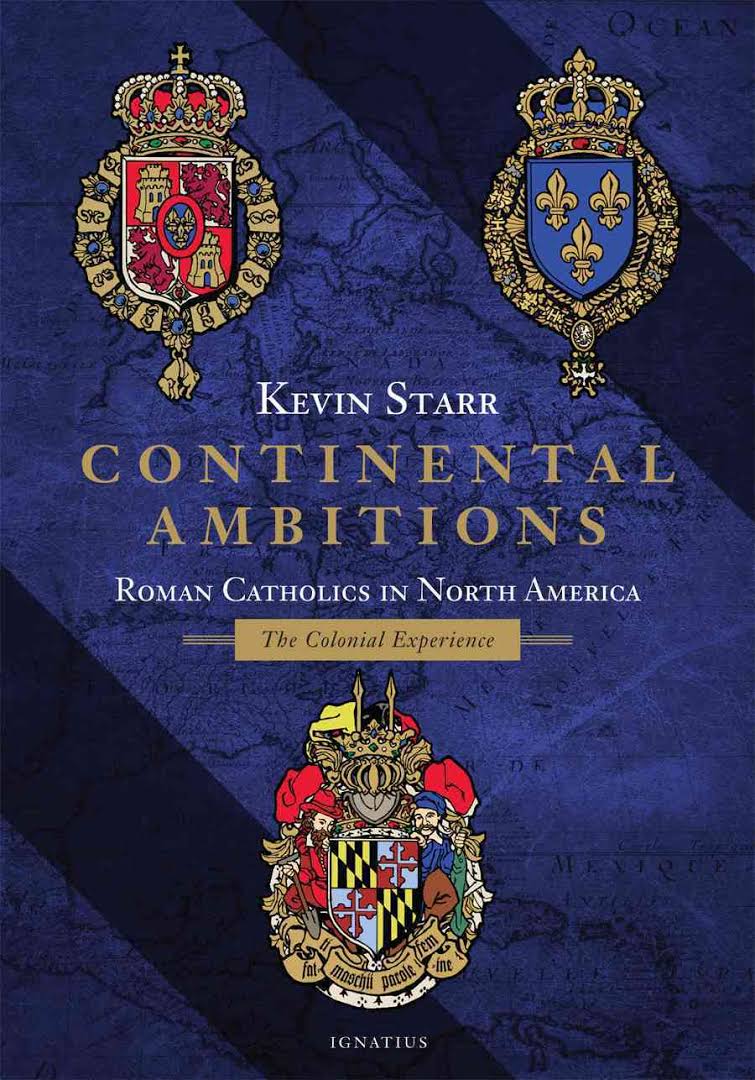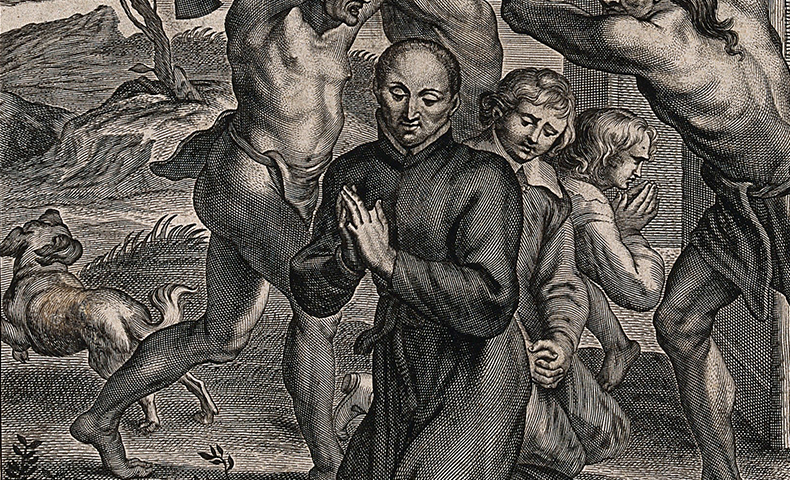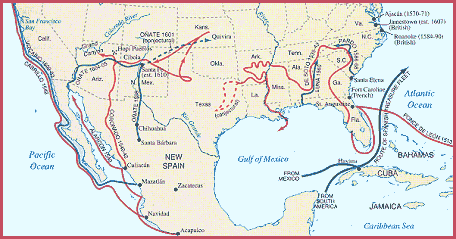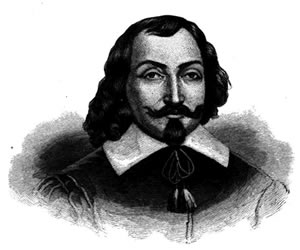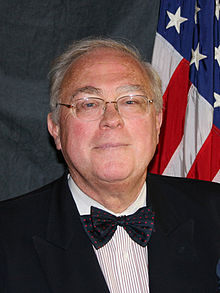Finding a Shared Colonial History: A Review of Kevin Starr’s Continental Ambitions
Jun 14th, 2017 | By Casey Chalk | Category: Blog PostsIn approaching American history, there is a tendency among Protestants and Catholics to view the social, political, and religious narrative of our country (and continent) through only the lens of one’s own faith community. In my own former Presbyterian church (PCA), I remember cookouts on the fourth of July during which a leaflet would be distributed, with quotations recounting the principal Calvinist influence on American politics and society. Alternatively, since becoming Catholic, I’ve noticed that various Catholic websites feature content on every major holiday, usually explaining that various public observances (Thanksgiving, Christmas, etc.) are truly the possession of Catholics, not Protestants. I don’t find the latter particularly edifying, since it seems inherently competitive and triumphalist, as if history’s main purpose is to serve not as a wellspring of shared knowledge of our past, but as a useful storehouse of ammunition from which to launch polemical grenades at one’s adversary. Welcome, then, is a recent work by revered (and, sadly, recently deceased) historian Dr. Kevin Starr, Continental Ambitions: Roman Catholics in North America, The Colonial Experience, which combines rigorous scholarship with a just and highly engaging treatment of both Catholics and Protestants in the New World.
A primary objective of Starr’s book, as he argues in his preface, is to prove that, “the history of Catholicism in America is not simply Catholic history. It is American history… There can be no understanding of American culture and history without an understanding of the role played by Catholic peoples in the unfolding drama of the American experience.”1 Starr hints at the ecumenical importance of his historical project, adding: “It is time for American Catholics to repossess and to learn from the story of their North American pilgrimage—and for Americans of every persuasion to come to a better understanding of each other.” I would like to highlight three elements of Starr’s history that I believe are of ecumenical interest to Protestants and Catholics alike. These are: (1) the importance of objectivity and a sympathetic ear when listening to the voices of the past; (2) the early and expansive role of Catholicism in the exploration and colonization of North America; and (3) the surprisingly early application of principles of religious freedom in French Canada and Maryland.
The Importance of Pathos
Starr’s work is explicitly Catholic; the author acknowledges his educational debt to the California Catholic schools of his youth. In his preface, he mourns the travails of Catholicism in America in the twentieth and twenty-first century, bemoaning “the erosion of trust in the clergy; the alienation of Catholics on the left and the right; the anti-Catholicism flourishing at every level of academia, media, and entertainment; the apparent indifference of many young people; and the garbled pronouncements of Catholic politicians.”2 He is, however, optimistic about the future of Catholicism in America, as well as positive about the current pontiff, lauding Pope Francis for encouraging a “renewed spirit of humility and service in laity and clergy alike.” In such observations, from the very first pages, the author is providing an important contextual marker for the reader; this will be a story that is sympathetic to Catholics and their experiences, if yet still honest and penetrating in its description and evaluation of their many failures and moral weaknesses. Although Starr’s work is by its very name a study of Catholic experience in colonial North America, he is throughout the book equally attuned to the role of Protestantism, and is particularly sympathetic to many Protestant persons, especially those who suffered at the hands of Catholics.
This empathic portrayal of both Catholics and Protestants provides a welcome contrast to so many contemporary historical books that are flagrantly anti-religious and quick to sit in judgment of earlier, more religious generations. Such books frequently fall into what may be called a “generational bias,” influenced by a Hegelian/Comtean positivism according to which one’s own generation is evaluated as morally superior to all preceding generations. As G.K. Chesterton noted, observing the illogical tendency for people to presume their contemporary period to be superior to previous ones, “My attitude toward progress has passed from antagonism to boredom. I have long ceased to argue with people who prefer Thursday to Wednesday because it is Thursday.”3
Two examples evince the kind of historical integrity and sympathy that are integral to Starr’s scholarly approach. The first is his account of early French Catholic missionaries, such as Isaac Jogues and Jean de Brebeuf, who in their evangelization efforts among Native Americans were particularly eager to suffer martyrdom — something many modern readers might consider reflective of some psychological disorder. Starr, however, implicitly praises Jogues’s and Brebeuf’s evangelical passions and extreme practices of mortification as demonstrative of men truly passionate about seeing the Huron people come to Christ. To die for Christ as a witness to the Huron—achieving eternal glory in the process—would for these men be an honor. Starr then devotes two long paragraphs to explain the concept of martyrdom in the post-apostolic Church, and how the understanding of martyrdom had developed within Jesuit theology, influencing such men as Jogues and Brebeuf. I doubt many contemporary historians would offer such a sympathetic and insightful examination of Catholic piety and practice.4
Another example is found in Starr’s discussion of filles du roi: young, usually poor, French Catholic women who volunteered to travel to Canada to marry men already working in the colony. French Canada, as has been the case with many colonies (e.g. Virginia, Australia, South Africa), struggled with a notable imbalance of the sexes. Many historians have condemned this program and others like it, viewing it as either predatory, sexist, or both. That it was tightly controlled by the Church and the French crown makes it an even easier target for those with predilections for anti-religious or anti-monarchist views. Starr is not so quick to judge, noting that most of these women’s prospects in France were not good:
With no dowry, no inheritance, no marriage, they would have toiled away a lifetime as the Cinderella servants of older sisters or brother or elderly parents. Staying in France meant never to have their own trousseau, their own furniture and pots and pans, their own home and new name; never to hold a child of their own in their arms or, if such a child were to be born to them while unmarried, to have entered next to the child’s name “father unknown” in the baptismal registry.5
Quite amazingly, the state paid all the bills for these women’s travel and the various assistance needed in finding a companion in the colony. Selection was even mutual, and women had the freedom to withdraw from a contract after the engagement — a somewhat rare allowance for that time in European society. Starr concludes this particular narrative not with judgment, but with a wry, respectful recognition of the diversity of the human experience:
Over the millennia, most of the human race has handled marriage and procreation in a similar manner, and it is not for moderns to preclude the possibilities of contentment or downright happiness in such arrangements (at a time when arranged marriages remained the norm in all classes).6
This is the kind of balanced, empathic approach required for historical studies that refrain from unjustified generational biases.
Catholicism Came Early to the Americas
Starr’s work also proves how early and fundamental Catholicism was to the European colonial experience of North America. Many readers may be aware of growing historical evidence over the last 40-odd years of Viking settlements in what is now Labrador and Newfoundland, particularly at L’anse Aux Meadows in Canada. What readers may not realize is that these Vikings were Catholics. They were however recent Catholic converts, and Norse mythology and pagan ritual remained a significant part of their religious identity. Starr argues that whatever mythology may be present in Norse sagas, enough historical truth has been divined from the texts by other historians to warrant scholarly consideration of Viking exploits in the New World. The sagas indicate there were five expeditions from Greenland to North America between 1003 and 1013, one of which included the first birth of a European child in North America, 575 years before Virginia Dare was born in the English colony of Roanoke off the coast of North Carolina.7 If it weren’t for a bizarre episode of inter-Viking violence that resulted in the abandonment of the almost-100 person colony, this very well could have been the beginning of North America’s first permanent colony — and a Catholic one, at that.
Moreover, Starr’s narrative reveals that a significant number of the 50 states in the Union had Catholic origins. To the south, Florida, Georgia, South Carolina, Texas, New Mexico, Arizona, California, and Colorado were all once claimed by Catholic Spain. Some of these were held as Spanish possessions for hundreds of years before they were seized in the Texas War of Independence and the Mexican-American War of the 1830s and 1840s. The Spanish reconnoitered several more, including Kansas, Nebraska, Virginia, North Carolina, Georgia, Mississippi, Alabama, and Arkansas. Spanning the north, mid-west, and south, French Catholics established settlements in New York, Michigan, Wisconsin, Illinois, Missouri, and Louisiana. In many of these expeditions, Catholic priests accompanied the conquistadors, settlers, trappers, and traders, preaching Christ to the native peoples and winning converts, far before any Indians ever had exposure to Protestant forms of Christianity. Even Protestant England for a time permitted Catholics to govern the nascent colony of Maryland.
Religious Liberty in the Catholic Colonial Experience
Finally, the book provides significant historical evidence to show that religious freedom in the Americas has a deep pedigree in Catholic lands, and predates what eventually developed in Protestant English colonies. Specifically, early colonial French Canada and English Maryland both practiced forms of religious freedom that served as progenitors — even if only indirectly — to what was eventually enshrined in the US Constitution. This is a significant observation by Starr, given a particularly ubiquitous narrative found in American public consciousness that argues for the preeminent role of Calvinism in the historical development of American religious freedom.8
First, consider French Canada. The earliest French expeditions into Canada occurred under the reign of the accommodating Henry IV, a Calvinist convert to Catholicism who sought to guarantee the rights of Huguenots. Students of French history may remember him as the monarch who famously declared the French crown to be “worth a Mass,” a reference to his pre-ascension conversion. Although there were some Protestant-Catholic conflicts in the French colony, Starr notes that for several decades Canada was led by Catholic humanists, participants in a European “Catholic Revival,” whose “irenic ecumenism,” or at the very least, “preference for peace over war,” allowed Catholics and Huguenots to live and work peaceably in the colony.
For example, Samuel Champlain, considered one of the founders of Canada, was a convert from Calvinism to Catholicism, but was never anti-Huguenot in his governance of the colony, which began in 1608 (by way of comparison, the English Pilgrims arrived in present-day Massachusetts in 1620). Huguenots were allowed to worship freely and many of the investors and some early leaders of the colony were Protestant. This dynamic of religious freedom, however, changed over the course of the Counter-Reformation in Europe, as the fiercely anti-Calvinist Jesuits played an increasingly dominant role in France and French colonial enterprises in Canada. The French Cardinal Richelieu, in 1627, canceled the monopoly of Huguenot merchants who financed the colony, replacing it with a Company of New France, limited to Catholic investors and strongly influenced by the Jesuits. By the mid-17th century, Starr observes: “truly, the years of Catholic-Huguenot detente in French Canada had ended.”9
We see a similar attempt at freedom of religion at work in early Catholic Maryland. Founded by the Catholic Lord Baltimore in 1634, the nascent colony in 1649 enacted the Maryland Toleration Act, drafted by Lord Baltimore himself, which sought to promote religious liberty. The Act declared: “No person or persons…shall from henceforth be any waies troubled, molested or discountenanced for or in respect of his or her religion nor in the free exercise thereof.”10 Indeed, until Protestants forcibly evicted the Catholic leadership of the colony, religious freedom flourished.11
A Book for Catholics and Protestants Alike
Anyone interested in the history of North America will be grateful for Starr’s analysis of the Spanish, French, and English colonial experiences as they relate to the Catholic Church. This is not, however, a book only for “papists,” to borrow the pejorative employed by English colonists. American Protestants should also better familiarize themselves with the role of Catholics in the early continental colonial experience in order to understand more fully their national narrative, and, as I have argued above, to gain a better understanding of how to understand history in a more ecumenical manner. Moreover, Starr’s academic sophistication is on display in his consistently sympathetic portrayal of Protestants in the New World as well. This is particularly evident in his discussion of how the European Wars of Religion spread to the New World, with both Catholics and Protestants frequently guilty of all manners of intolerable acts of brutality against one another.12 Starr’s analysis is always even-handed, following the data wherever it leads, even when it negatively portrays those to whom he is sympathetic and a co-religionist. This is the role any serious student of history should seek to emulate: umpire, not polemicist.
Continental Ambitions is a monumental work of scholarship, written by perhaps one of America’s best historians and biographers of the last fifty years. It is unfortunate indeed that Starr was unable to continue the work he begins here. In his preface he references other works “that follow,” that will further develop the story of “the role played by Catholic peoples in the unfolding drama of the American experience.”13 Yet one hopes that what Starr has begun here will serve as an inspiration to other historians, be they Catholic or not, willing to further the study of the North American Catholic (and more broadly, Christian) experience. Such would be a fitting tribute to this true son of California.
- Kevin Starr, Continental Ambitions: Roman Catholics in North America, The Colonial Experience (San Francisco: Ignatius Press, 2016), xii. [↩]
- Starr, Continental, xi. [↩]
- G.K. Chesterton, New York Times Magazine, 11 February, 1923. [↩]
- Starr, Continental, 352-357. [↩]
- Starr, Continental, 402-403. [↩]
- Starr, Continental, 403-405. [↩]
- Starr, Continental, 10, 14. [↩]
- To take but a few examples, Harvard historian George Bancroft asserted: “He who will not honor the memory and respect the influence of Calvin knows but little of the origin of American liberty.” America’s second president John Adams declared, “Let not Geneva be forgotten or despised. Religious liberty owes it much respect.” German historian Leopold von Ranke claimed—some might say grandiloquently—that “Calvin was virtually the founder of America.” More recently, Ian Speir at Public Discourse has argued that Founding Fathers John Witherspoon’s and James Madison’s “Calvinist theology and political philosophy imparted a firm belief that self-interest could be harnessed, ambition checked, and power balanced within government so that liberty and the common good were made secure.” The US Supreme Court in 1892 quite famously proclaimed America a “Christian nation,” which, given the ubiquity of Calvinists on the bench, probably had Protestantism in mind. [↩]
- Starr, Continental, 314-320. [↩]
- Zimmerman, Mark, Symbol of Enduring Freedom, 19, Columbia Magazine, March 2010. [↩]
- Unfortunately, the Protestant governorship that arose in time was less interested in such liberty, and was indeed blatantly anti-Catholic. The colony’s House of Delegates in 1704 signed “An Act to prevent the growth of Popery within this Province,” which forbade any Catholic clergy from saying Mass in the colony or converting Protestants, under penalty of imprisonment or expulsion. The act was repealed in 1718, though Catholics’ rights remained circumscribed. The Maryland Assembly in 1718 decreed that Catholics were forbidden from voting or holding office unless they took anti-Catholic, pro-Protestant oaths. The legislation would remain in effect for the next 50 years. See Starr, Continental, 500-504. [↩]
- For example, in the Caribbean and south Atlantic, French Huguenots and Spanish Catholics both participated in equally murderous activities against one another. The same sadly is reflective of early battles between French Canadian Catholics and the Protestant Dutch and English. [↩]
- Starr, Continental, xii. [↩]

